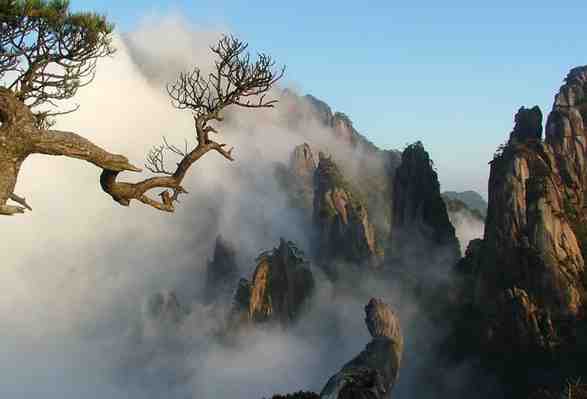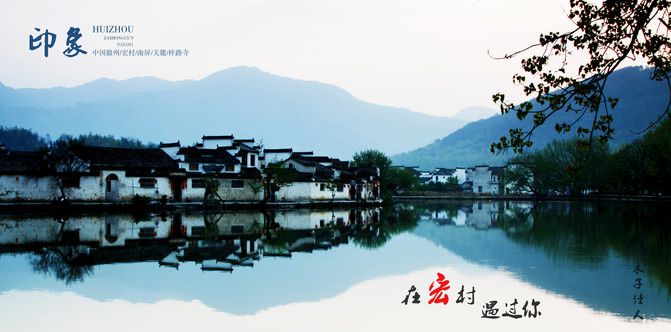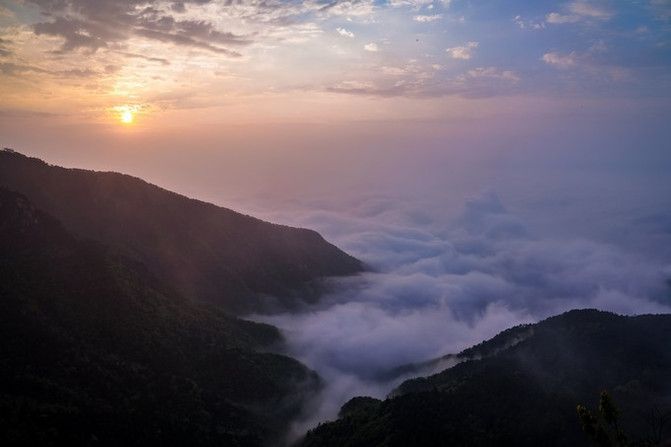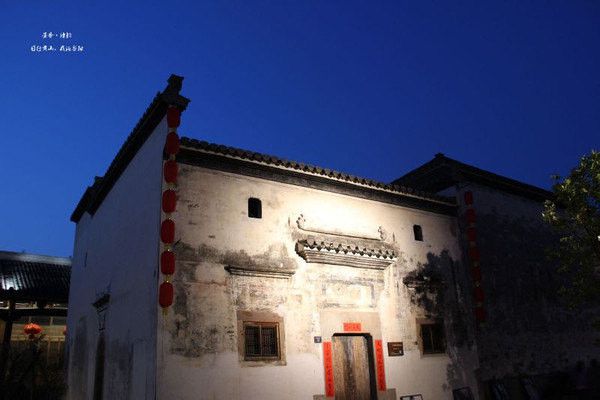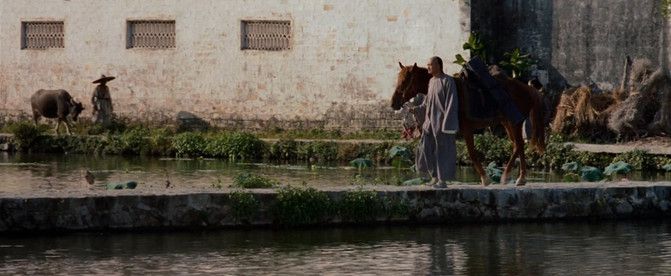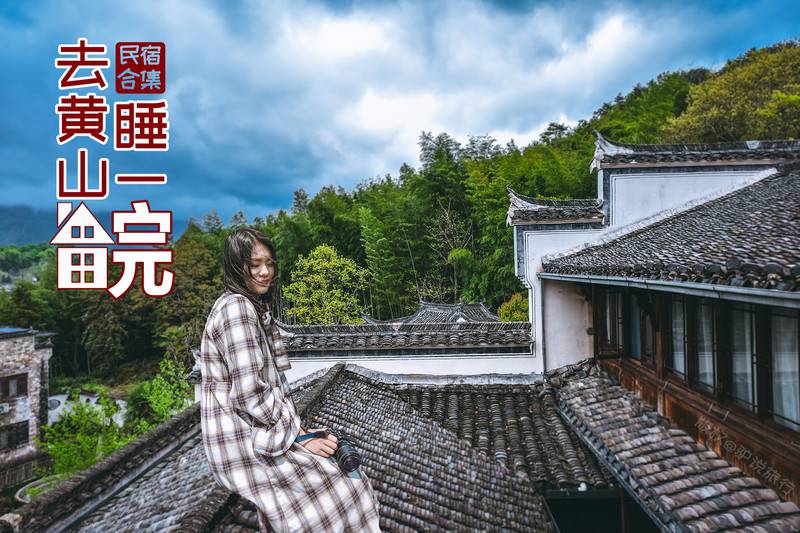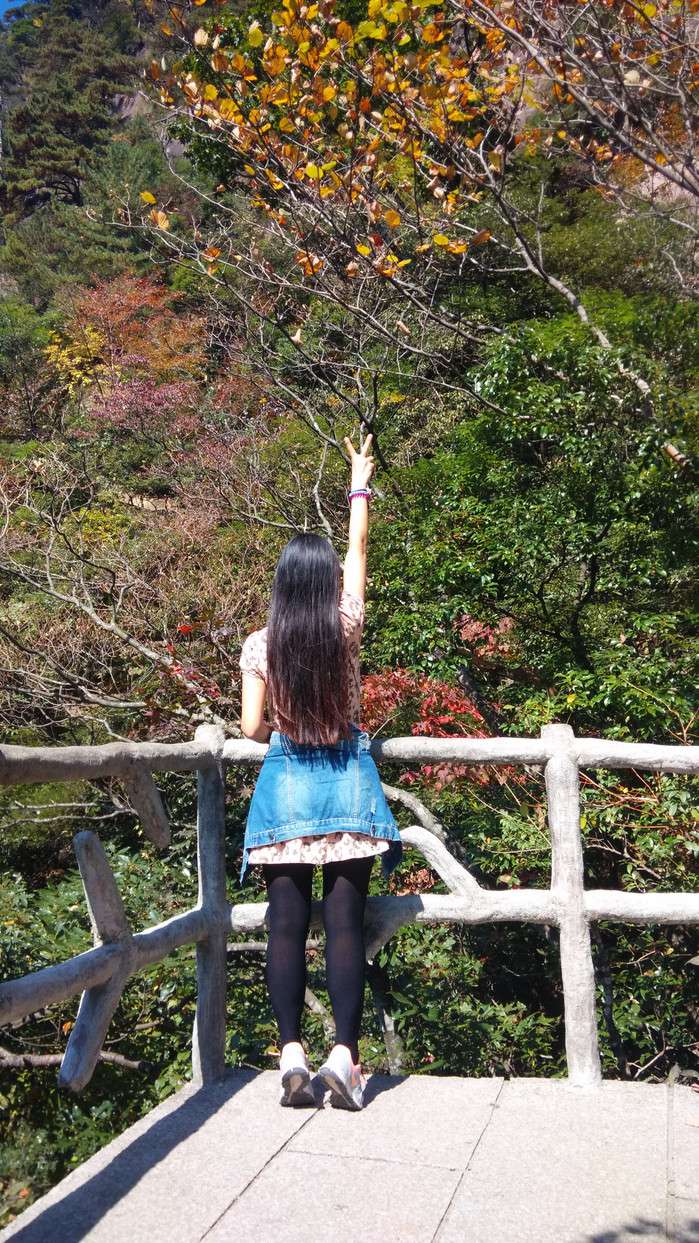October 18,2022 Post by :Ruoshui Chen
Mount Huangshan: Explore The Yellow Mountains In Eastern ChinaHuangshan Mountain the Yellow Mountain - Cultural Landscape
Huangshan Mountain or Yellow Mountain — Magnificent Cultural Landscape

Huangshan Mountain, or Yellow Mountain, in Anhui Province of China, Photo from Official Site of Huangshan.
Definition
What Is Huangshan Mountain? Huangshan Mountain, or Yellow Mountain, is a UNESCO World Natural and Cultural Heritage, with magnificent scenic views and cultural attractions. Throughout history, it has been considered the most beautiful, loveliest mountain, and a magnificent cultural landscape, whose sceneries have been frequently portrayed and praised in literature and art.
Stone Steps on Summit of Jade Screen Peak, Photo from Official Site of Huangshan.
Data
Important Data of Huangshan Mountain. It is located in the Huangshan City of Anhui Province; It is around 1200 square kilometers large; Huangshan Mountain Range has 72 peaks, and the highest peak (Lotus Peak or Lianhua Feng) is 1864 meters above sea level; There are over 100 ancient buildings and 300 stone inscriptions on the mountains. Four Wonders of Huangshan are the Seas of Cloud (Yun Hai), Special Pine Trees (Qi Song), Grotesquely-shaped Rocks (Guai Shi), and Hot Springs (Wen Quan). Seas of Cloud are divided into five sections based on location: East Sea, West Sea, North Sea, South Sea, and Heavenly Sea (in the middle).
Seas of Cloud on Range of Huangshan Mountains or Yellow Mountains, Photo from Huangshan Official Site.
Name
Origin of the Name of Huangshan Mountain or Yellow Mountain. Huang Di (Yellow Emperor) used to do alchemy around 4500 years ago in a magnificent mountain named Yishan, where he and two other people conquered many difficulties, became immortals, and flew up to heaven. In the year 747, Emperor Xuanzong of Tang changed this place's name to Huangshan Mountain, or Yellow Mountain, to honor these three Taoist immortals. Three main peaks were named after these three deities as Xuanyuan, Fuqiu, and Rongcheng.
Colorful Light on One of the Peaks, Photo from Official Site of Huangshan.
Culture
What Is the Cultural Importance of Huangshan Mountain? It is believed the place where Huang Di (Yellow Emperor), the cultural hero and ancestor of the Chinese Han people, used to do alchemy and become immortal. Has been an important part of Chinese art and literature, whose stunning beauty has been praised by famous scholars throughout history in tens of thousands of articles, poems, and paintings. Being a holy place for both Taoism Religion and Buddhism.
Milky Way View from the Top, Photo from Official Site of Huangshan.
Rock
Legends of the Grotesquely-shaped Rocks. In Huangshan Mountains, there are over 120 natural special-shaped rocks that are named after beautiful legends. Immortal Guiding the Way or Xianren Zhilu When a frustrated genius was lingering in the mountains, an old man showed up and persuaded him to cherish the things that he already obtained and to stay strong. After he made up his mind and decided to move on, he wanted to respect this old man as his master. But this old man refused and turned into a stone figure.
Immortal Guiding the Way or Xianren Zhilu, Photo by Ziyun Kuxingseng.
Monkey Watching the Sea or Houzi Guanhai A monkey fell in love with a beautiful girl, so he incarnated into a handsome young man and asked her to marry him. On the wedding day, the monkey revealed his true appearance after drunk, which scared the bride away. Afterward, he sat on top of a peak day and night, wishing she could change her mind and come back. But the girl never showed up again, and the monkey in the end incarnated to a stone statue.
Monkey Watching the Sea or Houzi Guanhai, Photo from Official Site of Huangshan.
Blooming on Writing Brush or Mengbi Shenghua When great poet Li Bai (701 — 762) was visiting there, he got invited by a master of a temple. After he finished a beautiful poem, Li Bai casually threw his writing brush into the mountain, which later turned into a huge peak, with a pine blooming on top.
Blooming on Writing Brush or Mengbi Shenghua, Photo from Official Site of Huangshan.
Flying Stone or Feilai Shi When a group of people was trying very hard to find suitable stones to build a bridge for their village, an immortal showed up and used his magic to transport many stones for them. After they collected enough for the bridge, the immortal flew the extra rock to Bright Summit Peak.
Flying Stone or Feilai Shi on Bright Summit Peak, Photo from Official Site of Huangshan.
Other Special-shaped Rocks, Photos from Huangshan Official Site.
Boys Kowtowing to the Guanyin Buddha (or Tongzi Bai Guanyin), Photo by Yao Yuqing.
Immortal Peach Stone (or Xiantao Shi)
Deity Appreciating the Moon (or Xianren Wangyue)
Deities Playing Chinese Chess (or Xianren Xiaqi)
Immortal Carrying a Basket on the Back and Collecting Medicinal Herbs (or Xianren Caiyao).
Sites
What Are the Impressive Attractions of the Huangshan Scenic Area?
Sunrise, Seas of Cloud, and Huangshan Pine Trees, Photo from Official Site of Huangshan.
Sunset Glow and Waterfall-Shaped Clouds, Photo from Official Site of Huangshan.
Hot Springs.
Stone Bridge (Buxian Qiao) Connects Cliffs, Photo from Official Site of Huangshan.
Huangshan Mountain: the Yellow Mountains
Yellow Mountains
The Huangshan Mountains (the Yellow Mountains) are one of China’s most incredible natural wonders and welcome thousands of travelers every year. It was listed as a UNESCO World Heritage Site in 1990. Xu Xiake, a famous geographer and writer from the Ming Dynasty, once remarked, “the landscape of the Five Famous Mountains tops those elsewhere, and the landscape of the Yellow Mountains tops that of the Five Famous Mountains.”
This article introduces the highlights of the Yellow Mountains and travel tips for visiting this magnificent place.
Yellow Mountains
Facts about the Yellow Mountains
Location : Tangkou Town, Huangshan District, Huangshan City, Anhui Province
: Tangkou Town, Huangshan District, Huangshan City, Anhui Province Height : 1,864 m (6,115 ft)
: 1,864 m (6,115 ft) Opening hours : 06:30–17:30 (peak season: March 2–October 31)
06:00–17:30 (weekends and public holidays during the peak season)
07:00–16:30 (off-peak season: November 1–March 1)
: 06:30–17:30 (peak season: March 2–October 31) 06:00–17:30 (weekends and public holidays during the peak season) 07:00–16:30 (off-peak season: November 1–March 1) Entrance tickets: CN¥190 (US$26) during the peak season; CN¥150 (US$21) during the off-peak season
Highlights of the Yellow Mountains — The Four Natural Wonders
The Yellow Mountains are famed throughout the world for their “four natural wonders” — peculiarly shaped pines, oddly formed rocks, the sea of clouds, and hot springs — which lend to their reputation of being “China’s strangest mountains.”
1. Peculiarly Shaped Pines
Pines on the Yellow Mountains are scattered over peaks and ravines. Growing on mountain slopes about 800–1,800 m (2,600–5,900 ft) above sea level, they usually take root on steep cliffs and stand on alpine peaks where there is little soil. Their tortured branches twist together to form grotesque but beautiful shapes.
Among the pines, the Greeting-guest Pine (迎客松, Yíng Kè Sōng) is the most renowned. It resembles a man waving his hands to welcome guests. This pine is an iconic symbol of the Yellow Mountains. You may see many Chinese people stop to take photographs in front of this pine.
Greeting-guest Pine
2. Oddly Formed Rocks
The Yellow Mountains is a natural museum of rocks of all shapes and sizes. Some look like animals, others like characters out of a Chinese dictionary, yet others like various objects and some are named after historical or mythical tales.
More than 120 have been named, among which the most famous are the Flying-over Rock (飞来石, Fēi Lái Shí), Immortal Pointing the Way (仙人指路, Xiānrén Zhǐ Lù), and Stone Monkey Watching the Sea (猴子观海, Hóuzǐ Guān Hǎi).
Flying-over Rock
3. Sea of Clouds
The Yellow Mountains are the home of clouds and mist. Among the four natural wonders, the sea of clouds is thought to be the loveliest. It bedecks this fairyland on earth. When it is cloudy, the peaks loom out from the mist.
Huangshan Sea-of-clouds
The sea of clouds in the Yellow Mountains is divided into five areas. It is advisable to choose an appropriate spot from which to view this marvelous sight.
1. South Sea: Located between the Lotus Peak and Celestial Peak, Yuping Building (玉屏楼) is the best place from which to view the South Sea.
2. North Sea: Lion Peak and Refreshing Terrace (清凉台) are the best places from which to appreciate the North Sea, as well as to catch a view of the sunrise.
3. East Sea: The White Goose Ridge (白鹅岭) stands guard against the wind at the entrance to the East Sea Scenic Area. It is a great viewpoint from which you can observe at the East Sea. If you take the Yugu Cable Car, you can admire the beauty of the East Sea below, too!
4. West Sea: The Cloud-dispelling Pavilion (排云亭) is the best place to get a view of the West Sea, as well as to catch the sunrise and sunset.
5. Heavenly Sea: Located at the center of the Yellow Mountains, Bright Top (光明顶) is 1,800 m (5,900 ft) above sea level and provides a panoramic view of all the surrounding scenery.
You can behold this breathtaking sight from November to May because of the lower temperature in the mountain area. It gets especially clear the day after rain or snow.
4. Hot Springs
The Huangshan Hot Springs has a history of more than 1,000 years. Located 650 m (2,100 ft) above sea level, the average annual temperature of the springs is 42℃ (108℉). The water is clear and rich in minerals. Not only does it relax the muscles and soothe the skin, but it is also therapeutic for those with metabolic disorders and cardiovascular diseases.
Huangshan Hot Springs
Huangshan Hot Springs comprises around 30 pools with different scents and healing properties, such as rose, milk, coffee, wine, tea, Chinese medicine, and so on. The most interesting one is the fish pool. It is rather enjoyable to have the little fish nibbling at your skin in the pool, and it is a good way to recover after hiking in the mountains.
Recommended Hiking Routes
The first step towards charting out a hiking route is to decide whether you will stay overnight in the mountains or not. If this is your first visit to the Yellow Mountains, we suggest that you stay at least one night in the mountains so that you have enough time to explore the best-known paths and appreciate the sunrise and sunset.
Huangshan Sunrise
Front Mountain Versus Back Mountain
The Yellow Mountains can be divided into the Front Mountain and the Back Mountain. To plan a hiking route, you need to decide which side you will go up and which side you will come down.
The Front Mountain area is known for its splendid landscape with oddly shaped rocks that opens up into a sea of clouds. Popular attractions include the Yuping Cableway, Greeting-guest Pine, Lotus Peak, Celestial Peak, and Fairy-walking Bridge. The Back Mountain area is known for its beautiful sculpted pine groves. Points of interest are the Yungu Cableway, Beginning-to-believe Peak, Black Tiger Pine, Lion Peak, and Stone Monkey Watching the Sea.
Celestial Peak
It is less strenuous to go up the mountain from Yungu Temple on the Back Mountain and come down the mountain from Yuping Building on the Front Mountain.
Route 1: For a 1-Day Trip
Yungu Temple (云谷寺) – Yungu Cableway (云谷索道) – White Goose Ridge New Station (白鹅新站) – Beginning-to-believe Peak (始信峰) – Beihai Hotel (北海宾馆) – Cloud-dispelling Pavilion (排云亭) – West Sea Grand Canyon (西海大峡谷) – Bright Top (光明顶) – Greeting-guest Pine (迎客松) – Yuping Building (玉屏楼) – Yuping Cableway (玉屏索道) – Viewing-waterfall Building (观瀑楼)
Route 2: For a 2-Day Trip
Day 1: Yungu Temple (云谷寺) – Yungu Cableway (云谷索道) – White Goose Ridge New Station (白鹅新站) – Beginning-to-Believe Peak (始信峰) – Beihai Hotel (北海宾馆) – Refreshing Terrace (清凉台) – Lion Peak (狮子峰) – Xihai Hotel (西海饭店) – Cloud-Dispelling Pavilion (排云亭) – West Sea Grand Canyon (西海大峡谷) – Cloud-Dispelling Pavilion (排云亭), where you can enjoy the sunset
Day 2: Enjoy the sunrise at Bright Top (光明顶) – Baiyun Hotel (白云宾馆) – Fairy-Walking Bridge (步仙桥) – Lotus Peak (莲花峰) – Greeting-Guest Pine (迎客松) – Yuping Building (玉屏楼) – Yuping Cableway (玉屏索道) – Viewing-Waterfall Building (观瀑楼)
West Sea Grand Canyon
Huangshan Mountains Weather and the Best Time to Visit
The peak tourist season lasts from April to November; September and October are popular months to visit Huangshan because of the pleasant weather. However, many travelers regard winter as the perfect season for hiking tours there, as trails will be less crowded and there will be snow-covered landscapes and fresh air to enjoy.
For a more comfortable travel experience, avoid visiting during public holidays, such as Chinese National Day (October 1), Chinese New Year (a week-long holiday in February), and school summer holidays (July and August).
Fortunately, the Yellow Mountains is picture-perfect all year round; it offers different kinds of beauty in each season.
Trees turn green and flowers bloom in spring.
Waterfalls and a sea of clouds take over in summer.
Red maple leaves and pines with verdant, green needles are prominent in fall.
Snowflakes and rime cover trees in winter.
Tips for Visiting the Yellow Mountains
1. To save energy, travel with a light pack and leave heavy luggage at the foot of the hill or in the downtown area.
2. Carry a disposable raincoat and waterproof backpack whether it is raining or not.
3. Take a cable car to the top to avoid the numerous steep and narrow stairs.
4. Plan your hiking route before booking your stay.
You May Like:
How to Get to the Yellow Mountains from Shanghai
The best way to travel from Shanghai to Huangshan is by high-speed train. The fastest train between these two cities only takes 2½ hours.
It is convenient to book tickets on apps or China Railway’s official website. We would be delighted to help you if you need assistance. Most train stations in China have English signs, but if you have any problems, go ahead and ask the station staff for help; some of them will probably speak English.
From Tunxi (Huangshan Downtown)
To get to Huangshan Scenic Area from downtown Huangshan, you can take a tourist bus from Huangshan Bus Station (黄山市汽车客运总站, Huángshān Shì Qìchē Kèyùn Zŏngzhàn). The journey takes about an hour and costs CN¥20 (US$3) per person. The tourist bus operates from 06:00 to 17:00.
From Huangshan Airport
There is no direct bus from Tunxi Airport to Huangshan Scenic Area. You first need to take a taxi to Huangshan Bus Station and then board a non-stop bus to the Yellow Mountains. If language is a barrier or if you prefer not to take public transport, feel free to contact us for a hassle-free private transfer.
From Huangshan North Railway Station
Turn right and walk for about 200 m (0.1 mi) after exiting the train station and purchase a bus ticket to the Huangshan Scenic Area at the Huangshan Tourism Passenger Transport Hub (黄山旅游客运枢纽, Huángshān Lǚyóu Kèyùn Shūniǔ). Tourist buses operate from 09:30 to 19:30 and cost CN¥20 (US$3) per person.
Travel Huangshan with Us
If you are planning a vacation in Huangshan and would like a hassle-free tour, do not hesitate to contact us and share your requirements. Our experienced tour guide, who spends over 200 days in the mountains every year, will customize the route based on your requests, the weather, and the tourist season. We are confident that we will be able to create an incredible journey for you!
Check out our top Huangshan tour packages:
Mount Huangshan: Explore The Yellow Mountains In Eastern China
The Yellow Mountain, located in eastern China, is a place of unparalleled natural beauty.
This mountain range in eastern China is home to some of the most magical scenery in the world. From towering peaks to pristine forests, Mount Huangshan has something in store for everyone.
This area is a popular tourist destination, with more than 10 million visitors each year. Whether to photograph a breathtaking landscape or simply to escape the hustle and bustle of city life, Mount Huangshan is the place to go.
In this article, we will explore some of the most interesting facts about this mountain.
History & Formation Of Mount Huangshan
The Yellow Mountain formed roughly 100 million years ago and the Quaternary Glaciation is responsible for its peculiar rock formations. During the Qin Dynasty, Mount Huangshan, or Yellow Mountain, was known as Yishan, or Mount Yi. By imperial command in 747 AD, its name was changed to Huangshan or Mount Huang. The name is claimed to have been bestowed in honor of Huang Di or the Yellow Ruler, a famous Chinese monarch and the Han Chinese mythological progenitor.
Huangshan was the location in which the Yellow Emperor journeyed to heaven, according to the legend. Another legend has it that the Yellow Emperor cultivated moral character and developed pills of immortality amid the highlands, thereby giving the mountains their name. The phrase, Huangshan, is usually attributed to the Chinese poet, Li Bai. The Yellow Mountain was inaccessible and obscure in ancient times, but its naming in 747 AD is believed to have given the mountain greater notice. From then on, the spot was often visited and countless temples were constructed there.
The Yellow Mountain range was formed over 120 million years ago from the collision of two tectonic plates. The rugged landscape is the result of erosion by wind and rain over millennia. The area is known for its striking granite peaks, many of which are more than a mile high. Popular features in the region include sunsets, uniquely formed granite peaks, Yellow Mountain pine trees, hot springs, winter snow, and views of the cloud pavilion from above. Yellow Mountain is frequently depicted in traditional Chinese art and literature, as well as in contemporary photography.
The Huangshan mountain range's three tallest and most well-known summits are Lotus Peak, Bright Peak, and Celestial Peak. Lotus Peak is the highest of the three, standing at 6,115.5 ft (1,864 m). Bright Peak is the second highest of the three, while Celestial Peak is the smallest. These peaks were formed around 100 million years ago when an ancient sea was uplifted. The mountains were then formed by glaciers during the Quaternary Period. Huangshan is a renowned tourist site, with many tourists coming to marvel at its enchanted environment. In addition, the region is well-known for its hot springs and tea plantations.
Some of the other notable peaks in Huangshan include Red Cloud Peak or Jiupeng Feng, which is named for its sharp peak that seemingly pierces the clouds, and Purple Cloud Peak. There are also numerous caves in Huangshan, including the famous Yungu Temple Cave. This cave is home to some of the most extraordinary rock formations in the mountain range. Visitors can explore the cave by walking or by boat. Huangshan is a beautiful place with a rich history and culture. This mountain range is definitely a must-see for anyone visiting China.
Flora And Fauna Of Mount Huangshan
The vegetation in the area varies depending on altitude. The mesic woodlands cover an area below 3608.9 ft (1,100 m). There are deciduous woods from 3608.9 ft (1,100 m) up to the tree line at 5905.5 ft (1,800 m). Alpine meadows make up the vegetation above that height. The region's flora is diverse, including one-third of China's bryophyte groups and more than half of its fern species. The Yellow Mountain pine (Pinus hwangshanensis) is named after Huangshan and is known for its vitality, as the trees thrive by sprouting right out of the rocks.
Many of the region's pine trees are more than a century old and have been given distinctive names such as the Black Tiger pine, or Welcoming-Guests pine, which is thought to be more than 1,500 years old. Pines come in a broad range of shapes and sizes, with the most twisted trees being the most beautiful. Huangshan's wet climate also supports tea leaf growth, earning it the title of one among Asia's leading green tea-growing hills. The powdery tips of tea leaves found in the Yellow Mountain area give rise to Mao Feng cha (Fur Peak tea), a well-known regional herbal tea.
The view from the mountaintops is known as the Sea of Clouds, as well as the Huangshan Sea, and various panoramas are known by names like The North Sea or South Sea. The area is also home to a variety of animals, including the Asiatic black bear, wild boar, red fox, sable, and macaque monkey. The Chinese giant salamander (Andrias davidianus), which can grow up to 6 ft (1.83 m) in length, is also found in the region. This amphibian is considered a delicacy in China and is often served stewed or grilled.
Size & Height Of Mount Huangshan
The size and height of Yellow Mountain are impressive. The Yellow Mountain range stretches from east to west China. Mount Huangshan is a UNESCO World Heritage Site and is also known as the Yellow Mountains. The area is well-known for its beautiful landscapes and was one of the favorite places of Chinese painters. The mountain range is made up of a series of jagged peaks that reach high elevations. The scenery at Mount Huangshan is breathtaking. The jagged peaks and rocky cliffs create an impressive landscape. The mountain range is also known for its evergreen forests, which are home to a variety of wildlife. The vegetation on the range is thickest below 3,600 ft (1,100 m), with trees reaching the tree line at 5,900 ft (1,800 m).
Huangshan, which literally translates to Yellow Mountains, is a mountain range in Anhui Province, eastern China. It was previously known as Yishan, but it was renamed following a legend that Emperor Xuanyuan conducted alchemy there. Huangshan was formerly known as Yishan during the Qin Dynasty. Its name was changed to Huangshan or Mount Huang by the imperial authority in 747 AD. The name is commonly thought to have been adopted in honor of Huang Di or the Yellow Ruler, a mythical Chinese monarch and the mythological ancestor of the Han Chinese.
According to a Chinese legend, the Yellow Emperor ascended to heaven from Huangshan. Another legend is that the Yellow Emperor cultivated moral character and developed pills of immortality amid the highlands, thus giving the mountains their name. The title Huangshan is commonly attributed to Li Bai, a Chinese poet. Huangshan was isolated and obscure in ancient times, but its renaming in 747 AD appears to have heightened interest in the site and numerous temples were built as a result. At Huangshan, there are an estimated 60,000 stone stairs constructed into the slope. The date of the steps construction is unknown, however, they are considered to be more than 1,500 years old.
Throughout the years, numerous attractive spots and physical features on the mountain have been given names and many of them have stories to tell. According to folklore, a man who did not believe the stories of Huangshan's beauty went to see the mountains for himself and was immediately persuaded to change his view. Shixin, which translates roughly as 'begin to believe', is said to be one of the peaks he visited. The landscape of Huangshan is truly unique and a must-see for anyone interested in Chinese culture or natural beauty. From the towering trees to the steep cliffs, there is much to explore in this magical place.
Importance Or Significance Of Mount Huangshan
The mountain is also renowned for its natural beauty and the vistas that it affords of the surrounding countryside. The area has been a popular destination for Chinese poets, artists, and tourists for many centuries. The mountain is home to many species of plants and animals, including the rare clouded leopard. The Yellow Mountain range was listed as a UNESCO World Heritage Site in 1990.
Huangshan was designated a site of scenic beauty and historical importance by the Chinese State Council in 1982. It was named a UNESCO World Heritage Site in 1990 for its scenery and significance as a sanctuary for rare and endangered wildlife. In 2002, Huangshan was classified as Jungfrau's sister peak in the Swiss Alps. Huangshan's reputation stems mostly from its significance in Chinese art and literature. The region has also been used for scientific research due to its unique flora and fauna. In the early 20th century, the geology and vegetation of Huangshan were the subjects of various studies by Chinese and international specialists. The mountain is still being looked into. For example, in the late 20th century, a group of researchers used the area to undertake a field study of Tibetan macaques, a local monkey species.
The mountain has a humid continental climate (Köppen climate classification Dfb), with four distinct seasons. Winters are chilly and wet, while summers are scorching hot and humid. Precipitation is moderate, totaling around 66 in (1,680 mm) each year, but is highly seasonal. Over two-thirds of the rain falls from June to August. The mountains are often covered in mist, with an average visibility of fewer than 660 ft (200 m).
Huangshan National Park is a beautiful and important place in China. It is well known for its stunning mountain scenery and has been a popular tourist destination for centuries. The park is also an important source of natural resources and is home to a variety of animal and plant species. It plays an important role in protecting the environment and promoting sustainable development. The park was founded in 1573 and covers an area of over 77.2 sq mi (200 sq km). It is located in the Anhui province of China and is about 74.6 mi (120 km) from the city of Shanghai. The park is divided into four main areas; the North Sea, the South Sea, the East Sea, and the West Sea. Each area has its own unique landscape and features. The North Gate is the largest area of the park and is home to Mount Huangshan, which is one of the most famous peaks in China. The South Sea is known for its beautiful beaches and crystal-clear waters. The East Sea is a popular destination for hikers, while the West Sea is known for its hot springs.
The park and the peaks, such as Lotus Peak, are popular tourist destinations and attract millions of visitors each year to these scenic areas. There are a variety of things to see and do in the park, including hiking, swimming, camping, and fishing. The scenery is breathtaking and there are plenty of photo opportunities. Mount Huangshan is a Chinese national park that is protected by Chinese law. The spectacular grandeur of Mount Huangshan has inspired some of China's most significant works of art, including painting, poetry, and temple construction.
According to a Tang Dynasty legend dated 747 AD, the mountain was the site of the long-sought elixir of immortality. Mount Huangshan was named as a consequence and its place in Chinese history as a legacy of the Ming Dynasty was secured. The spectacle of mountains rising from a sea of clouds drew hermits, poets, and landscape artists to Mount Huangshan. During the Ming Dynasty (approximately 16th century), this location inspired the Shanshui (mountain and water) school of painting, which was led by professionals, Jian Jiang, Zha Shibiao, Mei Oing, Xugu, and Xue Zhuang. Shi Tao was the most well-known of them all and his essay comments on the paintings of the monk, 'Bitter Pumpkin', is considered one of China's most important works of literature. The true beauty of Mount Huangshan can be experienced via these works of art and literature, the setting for some of the world's greatest cultural achievements.
Tourism
Huangshan is a popular tourist destination, with about 10 million visitors each year. The main attractions are the stunning scenery and the opportunity to hike on some of the more than 20 trails that crisscross the mountains. The most popular route is to the North Peak, which takes about four hours to complete. The famous four marvels are four distinct vistas of Mount Huangshan, notably Huangshan Pines, Absurd Stones, Sea of Clouds, and Hot Springs.
Huangshan is known for its weirdly shaped flora called the Strange Pines. The most renowned Black Tiger pine, one of Huangshan's monuments, extends out from the steep cliffs like an usher in a courteous greeting gesture. The mountain is also known for the absurd stones. Almost every top of Huangshan Mountain is covered in bizarre stones. The stones appear to represent human people, animals, or other items depending on the viewing angle. As a result, titles including Monkey Stone and Flying Over Stone have been given.
The Sea of Clouds is a famous feature of Mount Huangshan National Park. It is located in the North Sea of the park and is made up of a series of rolling hills that are covered in mist. The mist often forms a thick layer that covers the hills and obscures the view of the mountains. The Sea of Clouds is one of the most popular attractions in the park and is a must-see for visitors. The hot springs of Mount Huangshan are now a popular tourist center. The springs are located at the West Gate of the park and are known for their therapeutic properties. The water is said to have healing properties and is said to be able to cure a variety of illnesses. The hot springs are a popular place to relax and soak in the therapeutic waters.
FAQs
What city is the Yellow Mountain in?
The Yellow Mountains, also known as the Huangshan Mountains, are located in the Huangshan City of eastern China. These mountains in Huangshan City are known for their natural beauty and for the many legends that are associated with them. They are a popular tourist destination and people come from all over the world to visit them. The Yellow Mountains are made up of a series of peaks, the tallest of which is Mount Huangshan. The views from the top of the mountain are stunning and visitors can see for miles in all directions. There are also many interesting rock formations and caves to explore.
How do you get to Huangshan?
There are several ways to get to Mount Huangshan. You can take a bus from Huangshan City, or you can take a train to the town of Tunxi, which is located close to the mountain. There are also many hotels and restaurants in the area, so you will have no trouble finding somewhere to stay or eat. Make sure to bring your camera, because the views from Mount Huangshan are absolutely stunning.
Why is Huangshan famous?
Mount Huangshan is famous because of the amazing natural and human landscapes, dense ancient forests, and breathtaking views. The tallest peak in Mount Huangshan is Lotus Peak, made up of three mountains. The Lotus Peak rises to a height of 6102 ft (1,860 m) above sea level. The Sea of Clouds, or the Cloud Pavilion, is an incredibly famous scenic area in the Huangshan Tours of the Yellow Mountains.
How tall is the Huangshan Mountain?
The Huangshan Mountain in eastern China is about 6102 ft (1,860 m) tall. The Yellow Mountains are known for their many peaks and valleys, as well as the clouds that often surround them.
What is the history of Mount Huangshan?
The Huangshan Mountain is a well-known tourist destination in eastern China. The mountain has a long history, dating back to the eastern Zhou Dynasty (770-256 BC). The first mention of Huangshan Mountain can be found in a book called 'Zhou Li' ('The Rites of Zhou'), which was written during the rule of eastern Zhou Dynasty. The mountain was often used as a place of worship by the people of that time period.

